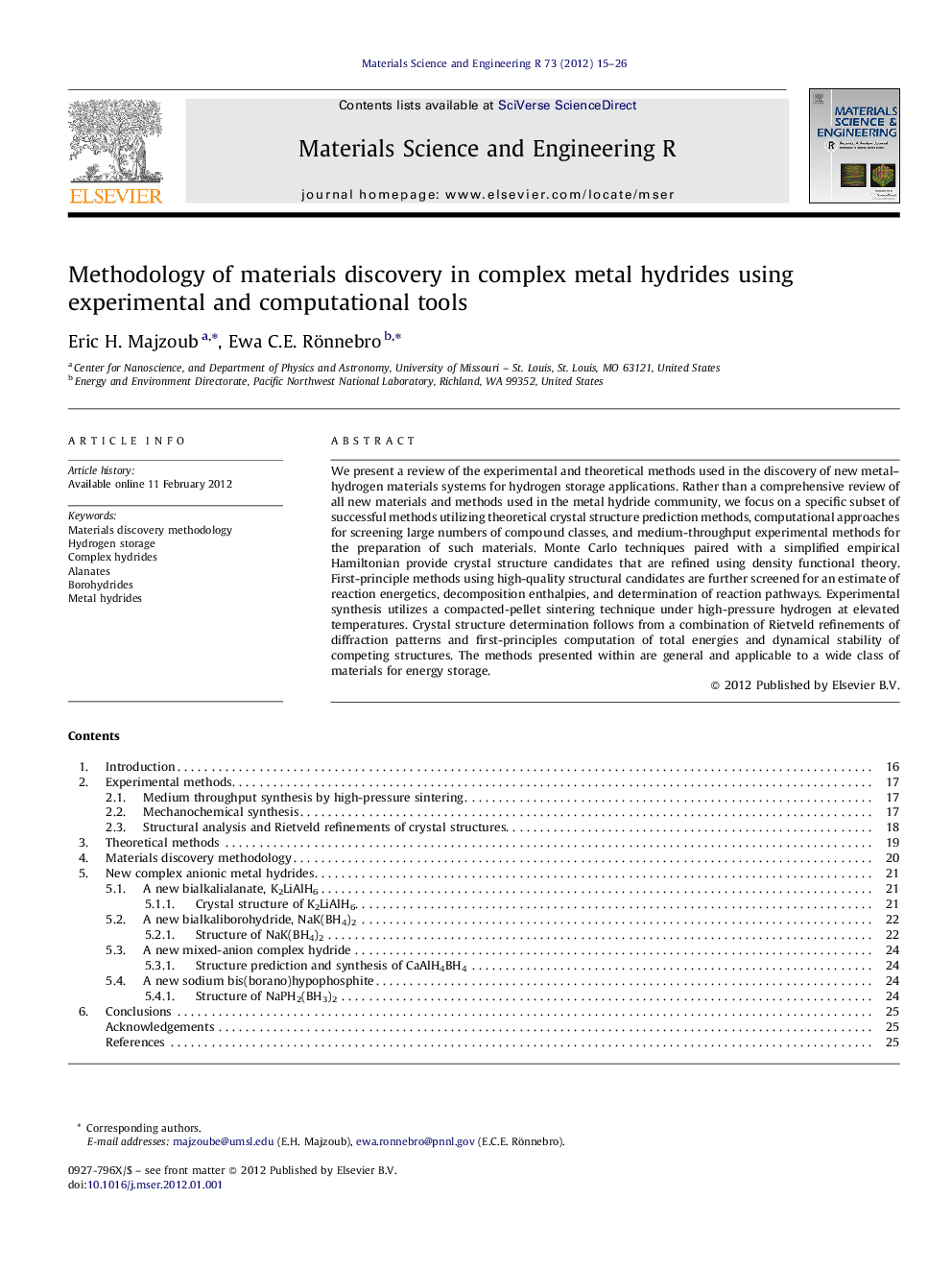| Article ID | Journal | Published Year | Pages | File Type |
|---|---|---|---|---|
| 1532449 | Materials Science and Engineering: R: Reports | 2012 | 12 Pages |
We present a review of the experimental and theoretical methods used in the discovery of new metal–hydrogen materials systems for hydrogen storage applications. Rather than a comprehensive review of all new materials and methods used in the metal hydride community, we focus on a specific subset of successful methods utilizing theoretical crystal structure prediction methods, computational approaches for screening large numbers of compound classes, and medium-throughput experimental methods for the preparation of such materials. Monte Carlo techniques paired with a simplified empirical Hamiltonian provide crystal structure candidates that are refined using density functional theory. First-principle methods using high-quality structural candidates are further screened for an estimate of reaction energetics, decomposition enthalpies, and determination of reaction pathways. Experimental synthesis utilizes a compacted-pellet sintering technique under high-pressure hydrogen at elevated temperatures. Crystal structure determination follows from a combination of Rietveld refinements of diffraction patterns and first-principles computation of total energies and dynamical stability of competing structures. The methods presented within are general and applicable to a wide class of materials for energy storage.
